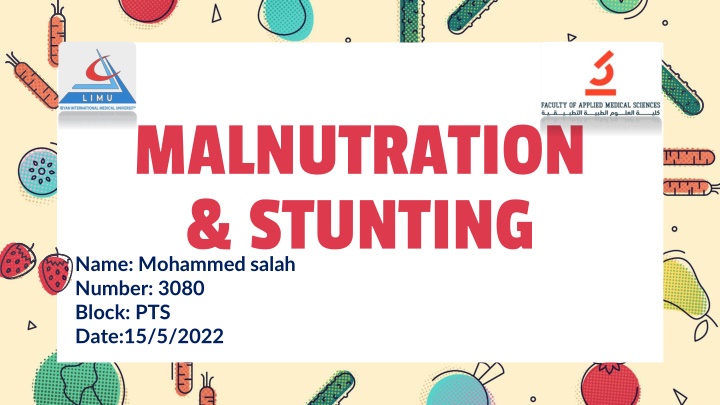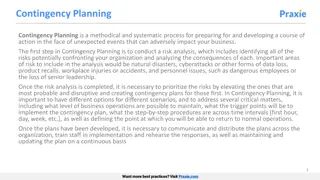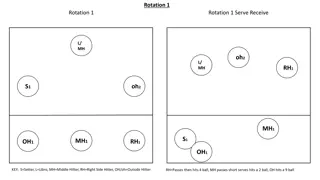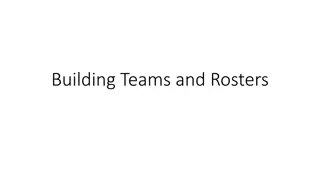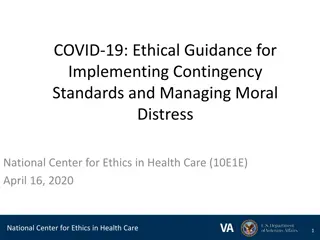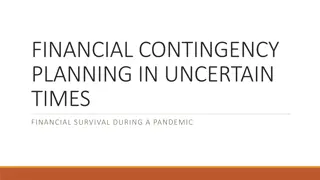Volleyball Contingency Planning Meeting Insights
The volleyball contingency planning meeting held on July 27, 2020, focused on developing recommendations for volleyball guidelines, anticipating medical guidance from NFHS/SMAC and OSAA/SMAC, discussing face covering information, competition start dates, and postseason schedules.
Download Presentation

Please find below an Image/Link to download the presentation.
The content on the website is provided AS IS for your information and personal use only. It may not be sold, licensed, or shared on other websites without obtaining consent from the author.If you encounter any issues during the download, it is possible that the publisher has removed the file from their server.
You are allowed to download the files provided on this website for personal or commercial use, subject to the condition that they are used lawfully. All files are the property of their respective owners.
The content on the website is provided AS IS for your information and personal use only. It may not be sold, licensed, or shared on other websites without obtaining consent from the author.
E N D
Presentation Transcript
MALNUTRATION & STUNTING Name: Mohammed salah Number: 3080 Block: PTS Date:15/5/2022
Objectives 01. 02. Stunting Malnutrition & stunting Relation between malnutrition and stunting Define stunting & causes 03. 04. Vicious cycle of stunting Prevention of stunting How stunting can be prevented How stunting can countinue through generations
Introduction Malnutrition in all its forms includes undernutrition (wasting, stunting, and underweight), vitamin or mineral deficiencies, overweight, obesity, and diet- related noncommunicable diseases. 1.9 billion people are overweight or obese while 462 million people are underweight. 52 million children under the age of five are wasted, 155 million are stunted
Definition stunting Stunting is when a child has a low hight for their age usually due to malnutrition, repeated infections, and/or poor social stimulation.
Causes of stunting Poor nutrition and a lack of access to diverse foods Poor sanitation and no access to clean drinking water Lack of proper healthcare for children and their mothers Inadequate psychosocial stimulation and/or parent-infant bonding
Malnutrition & stunting A balanced diet A gap in intake of macro and micro nutrients can put a child into the cycle that takes its toll on growth. This cycle starts with inadequate nutrition and it may lead to infection & impaired immunity.
Prevention of stunting focusing on what is commonly referred to As the first 1,000 days. the window of time between a mother s pregnancy and her child s second birthday is a key opportunity to ensure the healthy development of children around the world.
Conclusion Malnutrition is one of the biggest global health problems, especially in our continent of Africa This malnutrition can cause stunts in growth and leads to weaker adults both physically and in terms of intelligence. We have to try our best to eradicate this problem especially in our neighbouring countries. We must all raise awareness for this problem and try to donate to international organisations like UNICEF. CREDITS: This presentation template was created by Slidesgo, including icons by Flaticon, and infographics & images by Freepik
References Concern Worldwide. 2019. Stunting: What it is and what it means. [online] Available at: https://www.concernusa.org/story/what-is-stunting/ Pediasure IN. 2020. Child Growth and Development | Child Health Nutrition. [online] Available at: https://pediasure.in/child-nutrition/child-growth-and- development#:~:text=Adequate%20nutrition%20is%20one%20of,and%20develo pment%20of%20children1. Who.int. 2021. Malnutrition. [online] Available at: https://www.who.int/health- topics/malnutrition UNICEF DATA. 2018. Malnutrition in Children - UNICEF DATA. [online] Available at: https://data.unicef.org/topic/nutrition/malnutrition/
